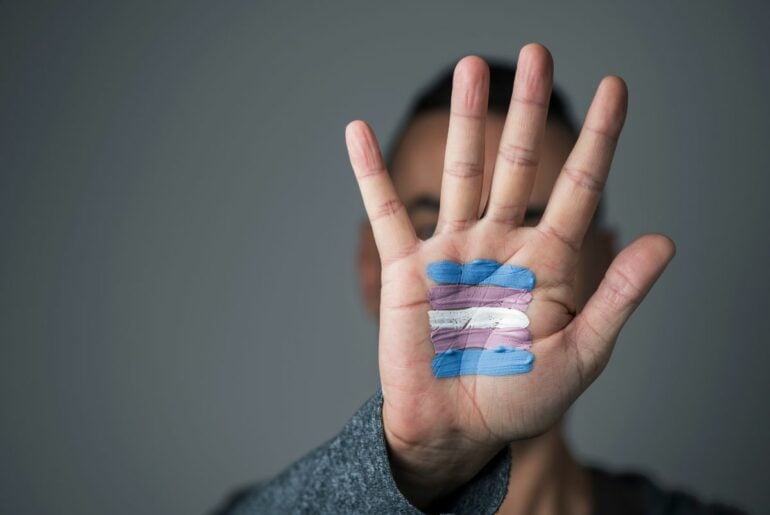Would you know what to say if your child asks what transgender means or they overhear transphobic remarks? It’s likely to come up sometime, whether you have family members, friends, or neighbors who identify as trans or nonbinary, or you’re just witnessing debates in the news or social media surrounding transgender issues.
Even if you don’t consider yourself knowledgeable about LGBTQ+ issues, or don’t feel that you fully understand trans identities yet, this is still an essential conversation to have with your kids.
It’s important for our kids to learn about and understand ALL different types of people. It’s also important for them to treat everyone kindly and with respect — and that absolutely should include trans, nonbinary, and gender nonconforming people.
This understanding starts with the basic concept that gender is not the same as sex. Gender is determined in the brain, and can be feminine or masculine or both or neither. Check the resources listed below for more in-depth information about gender identity.
Huge thanks to Egale, Canada’s leading organization for 2SLGBTQI people and issues, for the following super helpful script, as well as these quick transphobia interrupters:
- “Being a boy/girl/neither comes from your mind, not from what your body looks like.”
- “Boys and girls have all kinds of parts, but that’s not what’s important for gender identity.”
- “It’s none of your business what body parts someone has. That’s private.”
Simple script for interrupting transphobia
“A lot of the time, society tells us that our gender (whether you’re a girl, boy, or something else) is connected to what our body looks like. But these two things are different.
Your brain tells you what gender you are, not the body parts you have. What makes parts ‘boy parts’ or ‘girl parts’ is how the person who has them identifies.
It’s important to respect people’s gender identities. So if someone knows themselves to be a girl, then they are and we respect them as a girl. How they feel about themselves is SO much more important than the body parts they might have.”
Additional resources for understanding gender identity
If you are feeling confused or unsure about any of these concepts related to trans identities, there’s no shame in that. You owe it to yourself and your family and community to learn more!
Here are just a few research-backed resources to help:







